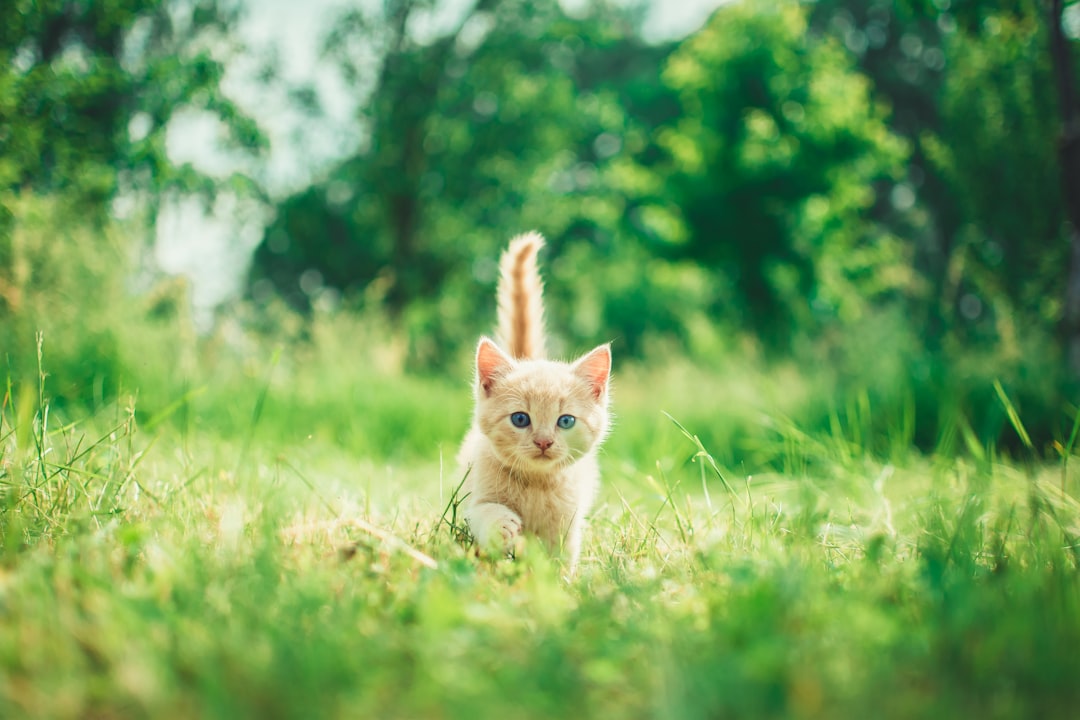Lifting and handling your feline friend can seem like a daunting task, but with the right approach, it can become a smooth experience for both you and your cat. Understanding your cat’s body language and preparing effectively lays the groundwork for successful Cat pickup. By employing ideal techniques and prioritizing safety measures, you not only ensure your pet’s comfort but also cultivate trust between you. Various situations may require different strategies for cat pickup, and being adaptable is key. Furthermore, teaching your cat to tolerate these moments will make future interactions easier and more enjoyable. In this blog post, we’ll explore essential tips and common mistakes to avoid, helping you create a safe and positive environment for you and your beloved companion.
Understanding Your Cat’s Body Language
Signs of Comfort and Discomfort
Understanding your feline friend’s body language is crucial for safe lifting and handling. Cats communicate their feelings through subtle signals, allowing you to determine when they are relaxed or stressed. The following table outlines common signs:
| Signals | Interpretation |
|---|---|
| Purring | Indicates contentment |
| Kneading | Shows affection and comfort |
| Ears Forward | Suggests curiosity and interest |
| Tail Vertical | Represents happiness and confidence |
| Hissing | Indicates fear or aggression |
| Ears Flat | Sign of discomfort or annoyance |
| Hidden Tail | Shows fear or insecurity |
How to Read Your Cat’s Signals
To effectively read your cat’s signals, observe their overall body posture along with facial expressions. Here are key indicators to keep in mind:
- Relaxed Body: A loose body posture, along with a relaxed tail and gently blinking eyes, suggests your cat is at ease and open to interaction.
- Tense Body: If your cat tenses up, flattens their ears, or swats at your hand, it’s best to avoid lifting them as they may feel threatened.
- Vocalizations: Pay attention to the sounds your cat makes. Soft meows usually indicate a desire for attention, while growling or yowling signifies discomfort.
By being attuned to these signals, you can ensure a smoother and safer experience for both you and your cat during pickup. Understanding their body language enhances trust and helps avoid stressful encounters.
Preparing for Cat Pickup
Gathering the right tools
Before attempting to lift your feline friend, it is essential to gather the necessary tools to ensure a safe and smooth experience. Here are some items you might find helpful:
| Tool | Purpose |
|---|---|
| Cat carrier | Provides a secure space for transport |
| Comfortable blanket | Aids in calming your cat and provides softness |
| Treats | Helps to create a positive association with the process |
| Grooming brush | Can reduce stress through familiar, soothing actions |
Having these items readily available can create a more positive atmosphere when lifting your cat.
Choosing the right environment
The environment in which you attempt to lift your cat significantly impacts their comfort level. Here are some tips to create a suitable setting:
- Quiet area: Select a room with minimal noise and distractions. Loud sounds can startle cats and make them anxious.
- Familiar surroundings: Choose a spot your cat is comfortable with, such as their favorite resting place, which can help them feel more secure.
- Controlled space: Limit unrestricted movement by closing doors to prevent escapes and maintaining control over the situation.
By preparing both the necessary tools and an ideal environment, you uplift your chances of a successful and stress-free cat lifting experience.
Ideal Techniques for Cat Pickup
The Proper Hold for Lifting
When it comes to safely lifting a cat, utilizing the correct hold is essential. Start by ensuring that the cat is calm and relaxed. Approach it slowly and gently, allowing the cat to become familiar with your presence. For lifting, position your dominant hand under the cat’s chest, right behind its front legs. Simultaneously, use your other hand to support the hindquarters. This method not only secures the animal but also distributes its weight evenly across your hands, ensuring stability and comfort.
| Step | Action |
|---|---|
| Step 1 | Approach slowly to avoid startling the cat |
| Step 2 | Place one hand under the chest |
| Step 3 | Support the hindquarters with your other hand |
| Step 4 | Lift gently while keeping the cat close to your body |
Best Practices for a Secure Grip
A secure grip is vital to prevent accidental slips or drops. Following these best practices will help ensure both your safety and the cat’s comfort:
- Use Your Body: Keep the cat close to your body as you lift. This not only provides security but also helps the cat feel more at ease.
- Maintain Control: Avoid sudden movements; rather, use slow and deliberate motions to reduce anxiety.
- Monitor Your Hold: Keep your grip firm but not too tight. A stressful grip can lead to discomfort for the cat.
- Engage in Positive Reinforcement: After a successful pickup, reward the cat with gentle petting or a treat to create a positive association with handling.
By mastering these techniques, you’ll be better equipped for safe and effective cat pickups, enhancing the trust and bond you share with your feline companion.
Safety Measures During Cat Pickup
Protecting yourself and your cat
Ensuring safety during the lifting and handling of a feline requires attention to detail. Implement the following measures for a secure experience:
| Safety Measure | Description |
|---|---|
| Secure grip | Always support the cat’s hindquarters. This prevents injury and maintains balance. |
| Calm environment | Minimize noise and distractions to keep both you and your cat calm during the pickup. |
| Use a carrier | For nervous cats, use a cozy carrier. This creates a secure space that reduces stress. |
| Avoid sudden movements | Slow and steady actions prevent startling your cat and reduce fear responses. |
Using a calming approach
A tranquil demeanor can transform the experience for both you and your feline companion. Follow these calming techniques:
| Technique | Benefits |
|---|---|
| Speak softly | Gentle voices can help reassure your cat, making them more willing to be picked up. |
| Gentle petting | Start with gentle strokes to relax your cat before attempting to lift. |
| Positive reinforcement | Reward your cat with treats or affection post-pickup to create a positive association. |
By prioritizing these safety measures, you can facilitate a smoother and more comfortable lifting experience for your cat, minimizing stress for both of you.
Cat Pickup in Different Situations
Handling a cat varies significantly depending on the context and the individual feline’s temperament. Understanding how to adapt your approach in different situations not only ensures safety for both you and your pet but also helps minimize stress.
Lifting a frightened or aggressive cat
When dealing with a frightened or aggressive feline, it is vital to prioritize safety. Use the following key techniques to ensure a secure and calm pickup:
| Tip | Description |
|---|---|
| Approach slowly | Move cautiously to avoid startling the cat. Maintain a calm demeanor. |
| Use a blanket | Gently wrap the cat in a towel or blanket to immobilize its paws. |
| Protect yourself | Wear thick gloves if necessary, safeguarding against potential scratches or bites. |
In these situations, it is crucial to gauge the cat’s body language carefully; look for signs of stress and be prepared to withdraw if the cat feels threatened.
Handling a sick or injured cat
Handling a sick or injured cat requires a gentle approach. Follow these practical steps:
| Step | Description |
|---|---|
| Calm the environment | Ensure a quiet, comfortable space to help alleviate the cat’s stress during handling. |
| Support the body | Keep one hand under the cat’s belly and the other supporting the back, providing maximum support. |
| Use a pet carrier | If possible, use a carrier to avoid further stress, allowing for a safe transportation method. |
Always speak softly; this helps reassure the cat during the experience. Remember to monitor for pain responses, and always consult a veterinarian if you suspect serious injury or illness.
After the Cat Pickup
Reassuring your cat post-lift
After successfully lifting your cat, it’s crucial to provide reassurance. Cats can feel vulnerable when picked up, even if they’re accustomed to it. Immediately after a lift, use gentle tones and calming phrases to help soothe your furry friend. You can say, “You’re okay,” or “Good kitty,” to create a sense of security. Additionally, consider providing a safe place for your cat to land — like a soft blanket or their favorite spot — to help them resume their comfort.
Monitoring for stress signals
Once your cat is back on the ground, be vigilant for any signs of stress. Stress signals may include:
| Behavior | Indicator |
|---|---|
| Ears Back | Indicates discomfort or fear |
| Tail Tucked | Suggests anxiety or submission |
| Hiding | A sign your cat feels unsafe or overwhelmed |
| Vocalizations | Excessive meowing or growling may indicate distress |
It’s important to pay attention to these behaviors as they can guide how you proceed. If you notice signs of stress, give your cat some time alone to decompress. Creating a watchful environment where they feel secure can make all the difference in easing their anxiety and helping them adjust post-pickup. Your cat’s comfort and mental well-being should always remain a priority.
Teaching Your Cat to Tolerate Pickup
Gradual exposure techniques
Teaching a cat to accept being picked up requires patience and understanding. Gradual exposure is a key technique that can ease your pet into the process. Start by simply extending your hands toward your cat without any lifting. Allow your cat to approach, encouraging curiosity through calmness. After a few sessions, gently place your hands around your cat’s body without lifting them off the ground. The goal is to familiarize them with the sensation of being held.
| Step | Action | Goal |
|---|---|---|
| Initial Contact | Extend your hands close | Build trust and comfort |
| Hands Around Body | Enclose gently without lifting | Familiarize with the holding sensation |
| Short Lifts | Lift just a few inches for brief moments | Encourage the idea of being lifted |
Positive reinforcement methods
Incorporating positive reinforcement is vital in teaching your cat tolerance. Reward your pet with treats or affection immediately after lifting them, no matter how briefly. This reinforces the idea that being picked up leads to positive experiences. Use a calm, soothing voice to create a reassuring atmosphere. Here’s a simple method to follow:
| Action | Description | Reward |
|---|---|---|
| Initial Hold | Hold your cat for 2 seconds | Treat or praise |
| Gradual Increase | Increase the hold time gradually (5 sec, then 10 sec) | Treats and cuddles |
| Final Steps | Comfort them after being put down | Playtime with their favorite toy |
By applying these techniques consistently, your feline friend will gradually learn to accept being picked up, making the process smoother for both of you.
Common Mistakes to Avoid in Cat Pickup
Rushing the process
One of the most common mistakes owners make is rushing the cat pickup. Cats are sensitive creatures, and hasty movements can startle them. When attempting to lift a cat, take your time to approach them calmly. Scope out their mood; if they’re relaxed, you’re in a better position for a successful pickup. Consider these factors:
| Mistake | Description | Recommended Action |
|---|---|---|
| Rushing | Hurrying while picking up can frighten the cat. | Approach slowly, allowing the cat to acclimate. |
| Forcing interaction | Trying to lift a reluctant cat can result in scratches or bites. | Wait for the cat to come to you; don’t force it. |
Neglecting your cat’s comfort
Another mistake involves neglecting your cat’s comfort during the lift. Cats often have their preferences for how they are handled. Ignoring these preferences can lead to a negative experience for both you and your pet. Here are some pointers:
| Mistake | Description | Recommended Action |
|---|---|---|
| Ignoring signals | Not recognizing your cat’s body language can lead to anxiety. | Pay attention to their purrs, hisses, or tail movements. |
| Uncomfortable grip | Holding your cat in an awkward position can cause stress. | Use a supportive hold, cradling properly to ensure security. |
By avoiding these common pitfalls, you can create a more positive experience for both you and your feline friend during pickup.
When to Seek Professional Help
Signs that professional help is needed
Recognizing when to seek professional assistance for cat pickup is essential for the safety and well-being of both pet and owner. Here are some key indicators:
| Signs | Description |
|---|---|
| Excessive Aggression | If your cat becomes consistently aggressive during attempts to pick them up, it indicates anxiety or fear. |
| Signs of Pain | If your cat vocalizes, hisses, or shows signs of discomfort upon being approached, immediate aid is necessary. |
| Inability to Calm Down | Cats that cannot relax after seemingly stressful experiences may require professional guidance. |
| Previous Trauma | If your cat has a history of negative experiences related to handling, consulting an expert can help. |
| Unexplained Behavioral Changes | Any sudden change in your cat’s demeanor, such as increased withdrawal or unsociability, may warrant professional advice. |
Consulting with a veterinarian or trainer
When you identify any of the signs mentioned above, it’s crucial to seek help from a qualified veterinarian or a trained animal behaviorist. They can offer tailored recommendations for your cat’s behavior. Here are some benefits of consulting professionals:
- Customized Assessment: Experts can conduct evaluations and suggest strategies that consider your cat’s unique personality and history.
- Medical Evaluation: A veterinarian can rule out underlying medical issues that may contribute to unusual behavioral patterns.
- Behavioral Training: Trainers can provide techniques to desensitize your cat to handling, potentially easing the pickup process.
- Follow-Up Care: Professionals can continue to monitor your cat’s progress and adapt strategies as necessary.
Seeking professional help ensures the well-being of your feline friend and creates a more positive experience during handling and pickup. Remember that investing in expert guidance can lead to long-term improvements in your interactions with your cat.
Frequently Asked Questions
What is the best way to lift a cat safely?
To lift a cat safely, always approach them calmly and allow them to see and smell your hands first. Place one hand under their chest just behind the front legs and use your other hand to support their back end. Lift gently but firmly, making sure to support their body evenly to prevent any discomfort. Always make sure to lift them with a calm demeanor to keep them relaxed and secure.
How can I tell if my cat is comfortable being handled?
Signs that your cat is comfortable being handled include purring, kneading, and rubbing against you. If they are relaxed, with their body loose and ears forward, this is a good indication they trust you. Conversely, look for signs of stress or discomfort, such as flattening ears, swatting, or trying to escape. Paying attention to their body language will help you gauge their comfort level.
Are there any specific techniques for handling a cat that dislikes being picked up?
Yes, for cats that dislike being picked up, it’s best to use a gradual approach. Start by letting them come to you by offering treats or engaging in play. You can use a towel to wrap them gently if you need to lift them, but ensure it is done with care. Always give them the option to escape, and respect their boundaries to build trust over time.
What should I do if my cat struggles while I’m trying to lift them?
If your cat struggles while you’re attempting to lift them, it’s crucial to stay calm and release them immediately. Forcing a cat can lead to injuries for both you and the pet. Instead, try to soothe them by speaking softly, allowing them to settle down, and then attempting a lift again using a gentler approach. Always ensure they feel safe before you attempt to lift them again.
Is there a proper way to hold a cat once it’s picked up?
Once you’ve picked up a cat, hold them against your body close to your chest for security. Securely support their back legs using one arm while the other cradles their front. This position ensures they feel safe and minimizes the chance of them wriggling free. Always be mindful of their comfort by maintaining a gentle grip and avoiding any tight holds.



